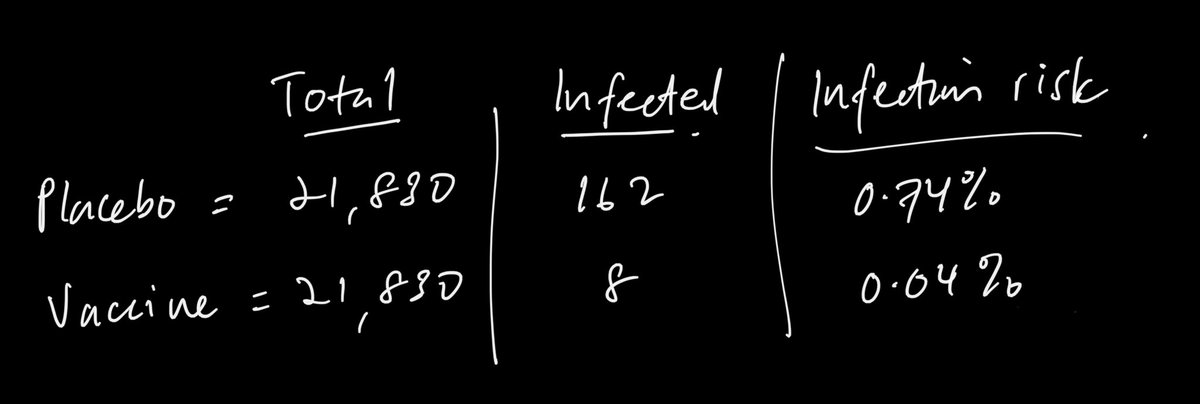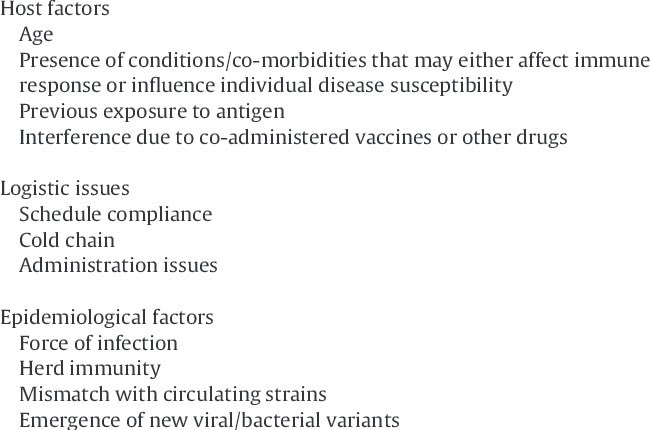
Some info on vaccine efficacy. We tend to make the mistake of 95% efficacy (Pfizer) being 95 out of 100 is protected from the disease while 5 out of 100 will get infected/succumb to disease.
But that’s not how vaccine efficacy works. So how did we get that 95%?
But that’s not how vaccine efficacy works. So how did we get that 95%?
Consider these numbers. The Pfizer P3 trial had 43,661 participants.
Total was split into half, each group received the placebo or the vaccine. The placebo group had 162 symptomatic infection & the vaccine group had 8.
We then can calculate the infection risk. 0.74% vs 0.04%.
Total was split into half, each group received the placebo or the vaccine. The placebo group had 162 symptomatic infection & the vaccine group had 8.
We then can calculate the infection risk. 0.74% vs 0.04%.

To get vaccine efficacy, first we get the risk difference between the two groups.
This means the vaccine reduces infection risk by 0.7 percentage point. But this is not efficacy.
Efficacy is dividing by original infection risk x 100%. Now u get the 95%.
This means the vaccine reduces infection risk by 0.7 percentage point. But this is not efficacy.
Efficacy is dividing by original infection risk x 100%. Now u get the 95%.

Another way to calculate v.efficacy is to use risk ratio. Basically just take the number of infected in both groups, get the ratio and make it into a %.
So what does 95% means? It means the vaccine reduces the risk of getting the disease by 95%. That’s an incredible number.
So what does 95% means? It means the vaccine reduces the risk of getting the disease by 95%. That’s an incredible number.

Typo : 43,660 total participants. Lol. That is why I need a calculator.
And I must stress again, vaccine efficacy is a lab result in a controlled environment. What we want to look at eventually is vaccine effectiveness. Low efficacy doesnt automatically mean low effectiveness.
If we vaccinate enough, low efficacy vaccines will have high impact.
If we vaccinate enough, low efficacy vaccines will have high impact.
Linking my posts on vaccine efficacy vs effectiveness here.
https://twitter.com/yoongkhean/status/1350072587175354369
And the thread on herd immunity. We can use herd immunity to increase effectiveness.
Increase coverage = increase herd immunity = increase effectiveness (even if the vaccine efficacy is 50%)
Increase coverage = increase herd immunity = increase effectiveness (even if the vaccine efficacy is 50%)
https://twitter.com/yoongkhean/status/1352859152062803969
• • •
Missing some Tweet in this thread? You can try to
force a refresh







